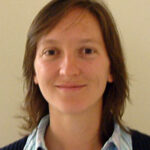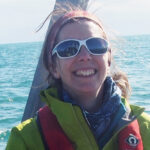Home

Exhibition of a Pool for Life, part of the project Jubilee Pool Stories. Children's work and their dreams for the future were exhibited at the second Greenwich Maritime Centre (GMC) international conference on the theme 'Society and the Sea' September 2018. Photograph Andy Hughes.
Creative data mapper using sensory ethnography
Arts-led action researcher
Interdisciplinary designer with social intent
Welcome to Ecogeographer,
And find out how sensory ethnography, when combined with collaborative art and design, can influence and promote sustainability.
In my own practice and through participatory, art-led workshops, I create work that reveals and reinforces a community’s connection to their landscape. Engaging people in the creative process allows data to be ‘mapped’ visually and presented as drawings, artwork, three-dimensional models, video, and illustrated publications. The process of co-creation encourages reflection about the future of a landscape, and the resulting data can be used in dialogue with stakeholders to help build resilience to change. My clients range from local schools and community groups to, universities, environmental organisations, and NGOs.
Ecogeographer is run by me, Dominica (Dom) Willliamson, an artist and designer who draws inspiration from landscape.

A delegate holds an ocean object so they can explain what an important skill octopus fishing in Madagascar is. Part of a Coral Communities visual method workshop with NGO partners Mwambao Coastal Community Network and Reef Conservation. Led by Dominica Williamson. Photograph Issue 7 Save Our Seas Foundation, Blue Ventures by Garth Cripps.
Sensory ethnography
I’ve adapted this qualitative research method when co-developing workshops in Europe, the West Indian Ocean and the UK. Participants are encouraged to express how they feel when they focus on aspects of their environment by, for example, making objects or photographs. This creative engagement elicits knowledge, memories, stories, and feelings that are crucial in understanding how people value and make sense of where they live. The process also offers insights into the culture of the community and the social interactions within it. NGO partners, who work on the ground with indigenous communities, have been crucial in setting up the workshops and ensuring their success.
One of the interesting things that came out of your work in Zanzibar was one of the old men talked about the historical way they used to manage octopus fisheries. So they would only fish for octopus for 3 days, twice a month, so immediately that was a strategy that we could build on to or latch on to. So that old guy may not have been someone we would have gone to speak to, he may not have come forward, he may not have been called. When you have focus groups he may not have been selected. Lorna Slade, Mwambao Coastal Community Network
I believe that using creative, sensory methods, in close partnership with NGOs, is an effective way of drawing out indigenous knowledge and experience, especially with individuals who lack the confidence to write or speak in an interview scenario. When people are encouraged to tune into their senses and participate in creative activities, they tend to respond more naturally. This might be through quiet discussion while making, or through practical workshops based around drawing, model-making, simple sculpture, sound recording, photography or video. To develop this approach, I’ve drawn on Sarah Pink’s innovative ‘Sensory Ethnography’ work as well as current research by other anthropologists.
Are you a landowner or land manager?
In order to apply successfully for the new environmental land management funding schemes applicants will need to show how people value a landscape and the changes made to it. I am co-developing a new service that can provide data about how people value the changes made by the projects that are funded. Do you want to take part in a prototype?

Viewshed analysis of Giant's Quoit project - what could neolithic people see - could they see the sea from the Giant's Quoit? Screen grab taken from www.thegiantoutdoors.com. Analysis: Caradoc Peters and Jan Leslie
New research published
Following a project to restore a Neolithic quoit in Cornwall, a group of us were keen to extend our local knowledge by exploring nearby Fenton-la, a ruined early medieval chapel. Aided by oral history exchange, we organised participatory walks – chosen jointly after democratic discussion – with the aim of reclaiming lost trails and forgotten connections to these two sites. Through the process of mapmaking and re-walking the land, we began to discover, for example, why paths had fallen into disuse and why it was important for local heritage. The project team has also adopted the UN’s Sustainable Development Goals to help gain funding. You can read about our work in a new book called Pathways: Exploring the Routes of a Movement Heritage.
Key past journal posts

The grey goose has gone
May’s about to arrive. I’m looking forward to it. April’s been fun but I’ve been left with sadness. Three of my favourite people died in March and I’ve been coming […]

Zanzibar, mapping in the sand
Partners from the 'Coral Communities' project visited the community of Fundo Island - located off the west coast of Pemba Island, in the Zanzibar Archipelago of Tanzania - to investigate their relationship with socio-ecological resilience, through the lenses of participatory exercises.

Webinar – Sensory Sea
Last month Dr Louisa Evans (Univeristy of Exeter) and Ecogeographer delivered a webinar to the MARSOCSCI network titled: Co-producing an understanding of the needs and priorities of coastal communities – […]

Friends of the Towans Art Club session 'Botanical Art for Families'. Funded by Dynamic Dunescapes. Pollinator pack - traits including tongues interactive exercise, created by Dominica Williamson. Photograph: Sophie Oudeboon.
The Big Draw and a new art club
I am part of art workshops run by Friends of The Towans Art Club and supported by Dynamic Dunescapes and Cornwall Wildlife Trust.
Through Botanical workshops, participants have learnt about unique and sometimes rare plants that they wouldn’t necessarily notice, especially in some recently scraped damper areas of the dune system. By first using hand lenses and making time to really ‘see’, then by drawing and painting, the wonders of the tiny world of plants were explored!
These workshops target science and art in a fun and relaxed way, with the aim of enabling everyone to become inspired by the mystery of this little known corner of the dunes as well as the art of painting plants. No experience is required, just the thirst for listening, looking, drawing and painting.
I found the combination of the science and art fascinating; Andy Nelson the conservationist talked about the habitat of some of the plants we were to draw and also the way the site is managed: Dominica Williamson our artist, gave us insight into the botanical process and a lot of guidance on how draw and paint the plants; a very enjoyable and inspiring day. Participant, Anne Schneider
I founded Friends of The Towans Art Club with artist Hilary Jean Gibson and the support of ranger Martin Rule and the Dynamic Dunescapes’ team in Cornwall. We are holding A Big Dune Draw each year to extend the reach of the project.

